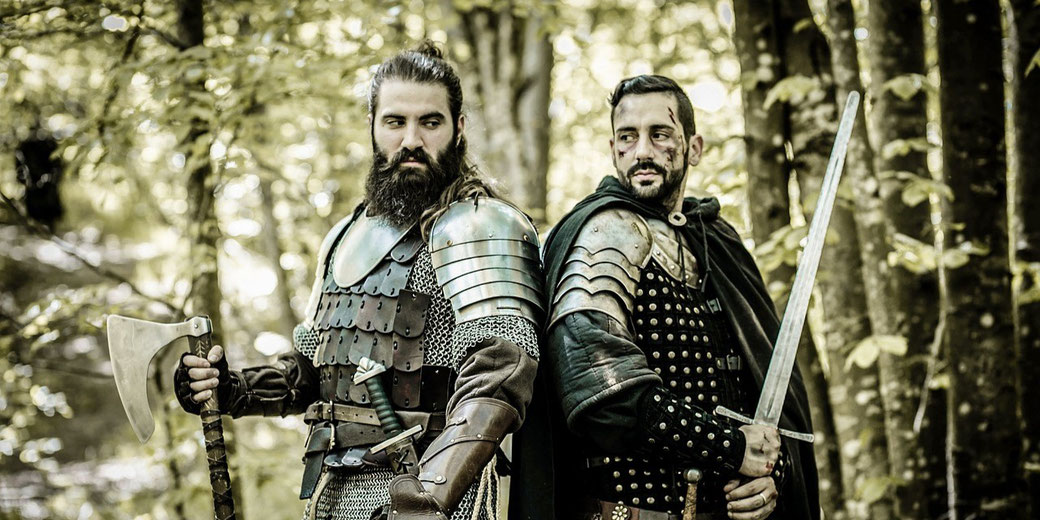Elite Byzantine Vikings: The Varangian Guard

If you've ever dreamed of serving as a personal bodyguard to a powerful leader, then you may want to take a page from the history books and join the Varangian Guard.
This elite unit, composed of Scandinavian and Eastern European warriors, was the personal bodyguard of the Byzantine Emperors and one of the most prestigious military units of its time.
Known for their ferocity in battle and unwavering loyalty to the Emperor, the Varangian Guard played a crucial role in many of the Byzantine Empire's military campaigns and politics.
But how did this legendary group come to be? Let's take a journey back in time to explore the origins of the Varangian Guard and their fascinating history.
Who were the Varangians?
The Varangian Guard was a prestigious unit of the Byzantine Empire, composed of Scandinavian and Eastern European warriors who served as personal bodyguards to the Byzantine Emperors.
The origins of the Guard can be traced back to the 10th century when Emperor Basil II was facing a period of internal rebellion and external threats.
In 988, Basil sought an alliance with Grand Prince Vladimir of Kiev, who sent 6,000 warriors to aid him.
These mercenaries proved so effective that Basil established them as his personal bodyguard replacing less reliable Greek guards.
The term 'Varangian' derives from the Old Norse word var, meaning 'pledge' or 'oath', reflecting their sworn loyalty to the Byzantine Emperor.
The Guard included Scandinavians, Rus, and other Eastern European fighters acknowledged for their ferocity and martial prowess.
One of the most famous members of the Varangian Guard was Harald Hardrada, the future King of Norway, who served in the Guard for over a decade and participated in campaigns across the Mediterranean, including in Sicily and the Holy Land.
Military prowess
The Varangian Guard quickly became one of the most prestigious units in the Byzantine military.
Stationed in Constantinople, the Varangian Guard resided in the imperial palace and often accompanied the emperor during public appearances and foreign campaigns.
Members of the Guard were well-paid and had access to privileges and benefits that were not available to other soldiers.
They were exempt from certain taxes and laws, which added to their prestige and influence within the Byzantine Empire.
Varangians were known for wielding massive two-handed axes, often referred to as 'Danish axes', and were also equipped with chain mail, round shields, and sometimes Byzantine-style helmets.
The Guard played a crucial role in many of the Byzantine Empire's military victories including the Battle of Chrysopolis (989) and Battle of Aghpha (1022).
They also fought in the Battle of Kleidion in 1014, which resulted in a decisive victory for Basil II over the Bulgarians. This battle solidified Byzantine dominance in the Balkans.
However, they weren't always successful. In the famous Battle of Manzikert in 1071, the Varangian fought valiantly to protect Emperor Romanos IV Diogenes against the invading Seljuk Turks, but their efforts could not prevent his capture after the Byzantine army was defeated.
Political power
The Varangian Guard's influence was not limited to the battlefield. The Guard also played an important role in the Byzantine court and politics.
Members of the Guard often held significant political influence due to their proximity to the emperor. Their presence reinforced the emperor's authority and at times were used as unofficial advisors.
They were also responsible for protecting the emperor's family and other important members of the court.
Over time, the Varangian Guard became increasingly integrated into Byzantine society.
Members of the Guard often married into prominent Byzantine families, and some even converted to Orthodox Christianity.
Despite this integration, however, the Guard maintained its distinct identity and continued to be composed primarily of Scandinavians and Eastern Europeans.
Legacy
The Varangian Guard continued to serve the Byzantine Empire until sometime during the 13th century, when all mention of them disappears from the historical record.
The Greek version of The Chronicle of the Morea mentions a Varangian unit escorting the Prince of Achaia to prison after the Battle of Pelagonia in 1259. This is considered one of the final references to the Guard as an active military unit.
Their influence had been declining in the decades prior to this. The fall of Constantinople in 1204 during the Fourth Crusade fragmented Byzantine control, and the empire's dwindling financial resources made them underfunded and, at times, unpaid, leading to diminished morale and effectiveness.
Also, by this stage many members of Viking origin had returned to their homelands and most of the guard were native-born Byzantines. This eroded their distinct identity, and the unit may simply have been merged into other sections of the army.
Despite their impressive history and status as one of the most prestigious military units of their time, the Varangian Guard is not as well-known today as other historical military units such as the Roman Legion or the Samurai.
One reason for this is that the Varangian Guard served the Byzantine Empire, which is not as widely studied or celebrated as other empires such as Rome or Japan.
Nevertheless, the Varangian Guard remains an important part of history, and their contribution to the Byzantine Empire's military campaigns and politics cannot be overlooked.
What do you need help with?
Download ready-to-use digital learning resources
Copyright © History Skills 2014-2025.
Contact via email
With the exception of links to external sites, some historical sources and extracts from specific publications, all content on this website is copyrighted by History Skills. This content may not be copied, republished or redistributed without written permission from the website creator. Please use the Contact page to obtain relevant permission.





